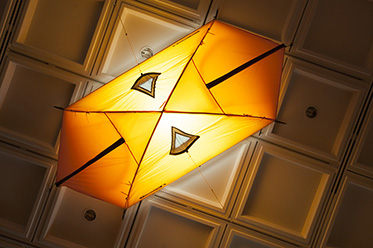 In a crowded and competitive market, how does an art museum located far from major centres of population – say, in Perth – make its mark? One obvious answer is to focus on what is distinctive about your gallery, your collection and where you are located in the world. Nevertheless, determining the appropriate balance between being a showcase for art made by artists with a connection to place and an institution with a responsibility to embrace a more comprehensive view of cultural production is an ongoing conundrum.
In a crowded and competitive market, how does an art museum located far from major centres of population – say, in Perth – make its mark? One obvious answer is to focus on what is distinctive about your gallery, your collection and where you are located in the world. Nevertheless, determining the appropriate balance between being a showcase for art made by artists with a connection to place and an institution with a responsibility to embrace a more comprehensive view of cultural production is an ongoing conundrum.
At the University of Western Australia, there are three art collections, each with a particular focus, and an exhibition program that links to the institution’s teaching and research mission. They are the Lawrence Wilson Art Gallery, its predecessor the Undercroft Gallery, and the Berndt Museum .
As the Director of the Cultural Precinct at the university I have management authority over those agencies and as such I’m grateful to the previous directors and countless donors who have turned their attention to the work of artists living and working in the state. I’ve been able to see how, through exhibitions, acquisitions, donations and research, these three museums have established the university as a hub for creative practice and how they make a distinctive local mark.
The university as a cultural centre
In its early years, the University of Western Australia provided a much-needed haven for artists and a venue for artistic endeavour when little else was available in the state.
For the first decades of the university’s establishment Perth was a small town at the extremity of Empire – both fiercely proud and simultaneously self-conscious of its isolation. The campus was a singular hub of creative experimentation where ideas could be expressed openly, where conventions could be challenged, and new work performed.
The HERE&NOW exhibition series was established at the Lawrence Wilson Art Gallery in 2012 to recapture the vibrancy of that engagement with local practice. It seeks to provide a snapshot of activity across the full span of activity within a selected area of practice within the visual arts.
Each year the exhibition highlights the creative enterprise of Western Australian artists working at the cutting edge of contemporary visual arts. Curated by a young curator with links to that community of artists the exhibition showcases their achievements and provides a context for their practice.
For the inaugural HERE&NOW exhibition in 2012 Katie Lenanton curated an exhibition that explored the interface between craft and fine art and the liminal space of Artist-Run-Initiatives (ARIs). HERE&NOW13 focused on artists with a disability, curated by Katherine Wilkinson; HERE&NOW14 showcased artists working in ceramics, curated by Emma Bitmead. In 2015 HERE&NOW explores sculpture in an ever-expanding field through the insights of curator Andrew Purvis.
Western contemporary
Like their predecessors, the current generation of emerging Western Australian artists are energised by living there and are conscious of their role in building cultural awareness.
They are not oblivious to the art scenes of Sydney and Melbourne, but they also are keenly aware of what is happening in Berlin, London, New York, Shanghai and Hong Kong. This sense of connectivity is evident in their practice and in the ways in which they are constructing their careers.
Unlike those artists of previous generations working there, many now exhibit nationally and internationally, so it is often the case that their work is better known outside Western Australia. As a result, there is an even greater need to situate the local within a national and international context.
Over the past two years the Lawrence Wilson Art Gallery and the Berndt Museum have presented a series of exhibitions that showcase the work of local artists within the wider context of the Indian Ocean rim and the multiple cultures of Asia to our north.
ORIENTing (2013) examined the work of Ian Fairweather and contemporary Australian artists of Asian/Australian heritage. Transcending Borders (2014) presented historical work from the collection alongside the work of contemporary artists from Korea and Australia. We have also shown Ukiyo-e works from the Berndt collection.
Forthcoming exhibitions will feature the work of German émigré artist Elise Blumann and a survey of work created within the Warmun Community over the past three decades. The Blumann exhibition is the result of intensive research by Sally Quin, curator of the Lawrence Wilson Art Gallery, and Sandy Toussaint, Associate Director of the Berndt Museum, is curating the Warmun project.
Both projects have their catalyst in the University collections they manage, and each is the result of close collaborations with teaching schools, research centres, the Warmun community and on campus agencies such as UWA Publishing. Since its establishment a century ago, the University of Western Australia has staked a claim as both a hub of creative activity and centre for research and collaboration with creative practitioners committed to interpreting and understanding this place.
As we plan for the future this commitment to commissioning, presenting, researching and collecting the local must be balanced with an increasing interest and commitment to a similar engagement with our neighbours sharing the same time zone and abutting the same ocean.
Staking a claim: a rationale for local art museums
Ted Snell is Winthrop Professor, Director Cultural Precinct at University of Western Australia.
This article was originally published on The Conversation.
Image: David Brophy, high line, 2014, two man tent, fixings – photo by Alessandro Bianchetti.
